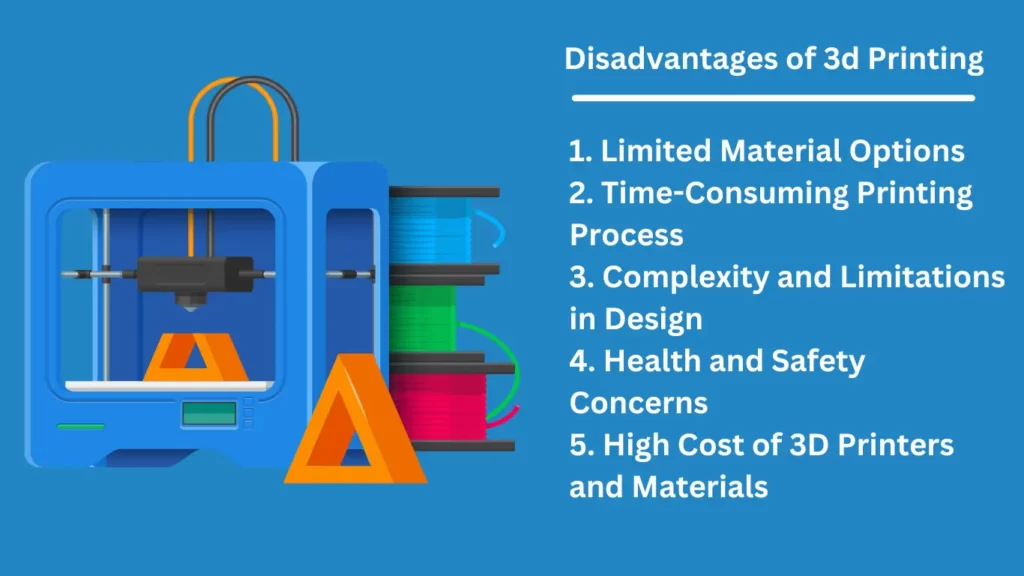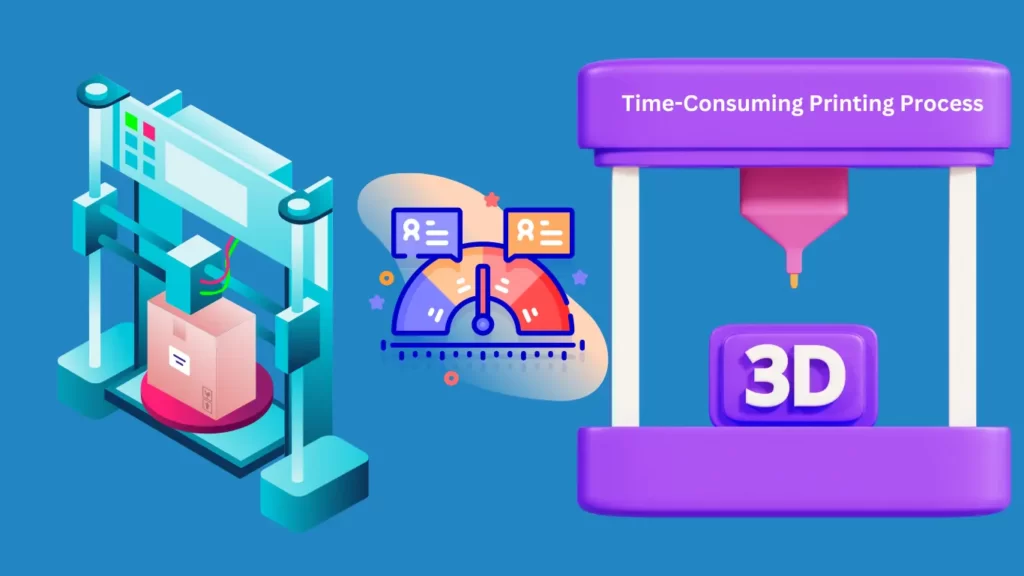Disadvantages of 3d Printing : As 3D printing continues to revolutionize industries and transform the way we create objects, it is important to acknowledge that like any other technology, it has its limitations and drawbacks. In this article, we will delve into the hidden side of 3D printing and explore its disadvantages.

From limited material options to health and safety concerns, we will uncover the challenges that come with this innovative technology. By understanding these disadvantages, we can make informed decisions and harness the full potential of 3D printing.
3d Printing Disadvantages | Disadvantages of 3d Printing
1. Limited Material Options
One of the major drawbacks of 3D printing is the limited range of materials that can be used. While advancements in technology have expanded the options, the choices are still relatively limited compared to traditional manufacturing methods. Most 3D printers are designed to work with specific materials such as plastic, resin, or metal.
For example, the strength and durability of 3D-printed objects may not match those produced through traditional manufacturing processes. This limitation hinders the use of 3D-printed objects in applications that require high mechanical strength or specific material properties. While ongoing research and development aim to address these limitations, it is important to consider the material options available when utilizing 3D printing technology.
2. Time-Consuming Printing Process
Another disadvantage of 3D printing technology is the time-consuming nature of the printing process. Unlike traditional manufacturing methods that can produce objects at a faster rate, 3D printing is a slow and meticulous process. The layer-by-layer approach of 3D printing requires each layer to be printed and solidified before moving on to the next one.

The printing time can vary depending on the size, complexity, and resolution of the object being printed. Large and detailed objects can take several hours or even days to complete. This can be a major drawback for industries that require fast production turnaround times. Additionally, the time-consuming nature of 3D printing can limit scalability and mass production capabilities.
3. Complexity and Limitations in Design
While 3D printing offers tremendous design freedom, it also comes with complexities and limitations. Designing objects for 3D printing requires specialized knowledge and skills. It is not as simple as creating a digital model and sending it to the printer. Designers must consider various factors such as support structures, printing orientation, and material properties.
Support structures are necessary to ensure the stability of overhanging or complex geometries during the printing process. However, these structures often need to be manually removed or dissolved after printing, which can be time-consuming and may leave marks on the final object.
These complexities and limitations in design can be a barrier for individuals or businesses without the necessary expertise or access to specialized design software. It requires a learning curve and investment in training to fully leverage the design possibilities offered by 3D printing.
4. Health and Safety Concerns
While 3D printing opens up new possibilities, it also raises health and safety concerns. The process of 3D printing involves melting or curing materials, which can release potentially harmful fumes or particles into the air. Depending on the materials used, these emissions can pose health risks to operators and individuals in the vicinity of the printing process.
Certain materials, such as certain types of plastics or resins, may release volatile organic compounds (VOCs) when exposed to high temperatures. Prolonged exposure to these VOCs can lead to respiratory issues or other health problems. Additionally, the fine particles generated during the printing process can cause respiratory irritation or contribute to indoor air pollution.
5. High Cost of 3D Printers and Materials
The cost of 3D printing technology can be a significant barrier for individuals or businesses looking to adopt this innovative manufacturing method. 3D printers themselves can be expensive, especially those designed for industrial or professional use. Additionally, the cost of materials used in 3D printing can add up, especially when printing large or complex objects.
The price of 3D printers can range from a few hundred dollars for entry-level consumer models to thousands or even tens of thousands of dollars for high-end professional or industrial-grade printers. The cost of materials varies depending on the type and quality, with specialized materials often being more expensive. This cost factor can limit the accessibility of 3D printing technology, particularly for small businesses or individuals with limited budgets.
Conclusion : Disadvantages of 3d Printing
While 3D printing offers numerous advantages and has the potential to revolutionize manufacturing, it is essential to acknowledge its disadvantages as well. The limited material options, time-consuming printing process, complexity and limitations in design, health and safety concerns, and high cost of 3D printers and materials are important factors to consider when utilizing this technology.
By understanding these disadvantages, individuals and businesses can make informed decisions about the feasibility and suitability of 3D printing for their specific needs. Despite these challenges, ongoing advancements and research in the field of 3D printing continue to address and overcome these limitations.
So that’s all about Disadvantages of 3d Printing.
Pingback: Advantages of 3d Printing | 3d Printing Advantages : 2023 - Printer X Pert